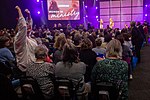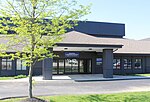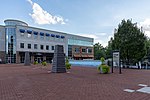2016 Ohio restaurant machete attack
2016 in Ohio21st century in Columbus, OhioAttacks in the United States in 2016February 2016 crimes in the United StatesIslamic terrorism in Ohio ... and 6 more
Israeli-American historyKnife attacksMass stabbings in the United StatesStabbing attacks in 2016Terrorist incidents in the United States in 2016Terrorist incidents involving knife attacks
On February 11, 2016, Mohamed Barry, a native of Guinea who was a permanent resident in the United States and had been working in computer programming and information technology, entered the Nazareth Restaurant in Columbus, Ohio, and began to attack customers with a machete, injuring four. Barry was killed as he attempted to attack police officers with his machete. Four years prior to the incident, he had been investigated by the Federal Bureau of Investigation (FBI) for making radical statements. The attack was investigated as a possible instance of lone-wolf terrorism. In 2017, the White House said it was a terrorist attack.
Excerpt from the Wikipedia article 2016 Ohio restaurant machete attack (License: CC BY-SA 3.0, Authors).2016 Ohio restaurant machete attack
Thompson Road, Columbus
Geographical coordinates (GPS) Address Nearby Places Show on map
Geographical coordinates (GPS)
| Latitude | Longitude |
|---|---|
| N 40.063888888889 ° | E -82.863333333333 ° |
Address
Thompson Road
43239 Columbus
Ohio, United States
Open on Google Maps









